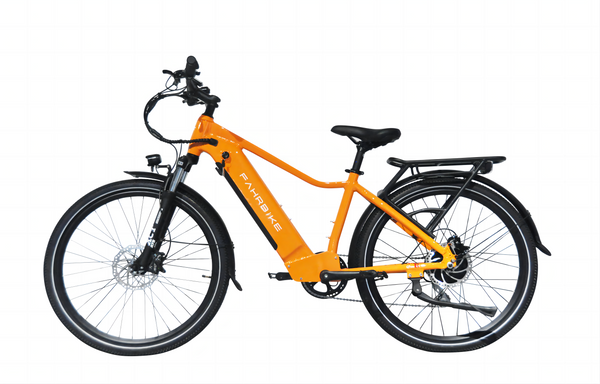Shipping an electric bike entails more than simply stuffing it into a cardboard box and sending it on its way. Aside from the sheer size and weight of the bike, which comes equipped with a motor and all of its electrical components, there's also the lithium ion battery to think about. In preparation for holiday shipping deadlines, this guide will cover everything from shipping regulations for your electric bike to packaging recommendations and shipping tips from Fahrbike's shipping experts.

WHAT YOU SHOULD KNOW BEFORE SHIPPING AN EBIKE BATTERY
If you've ever wondered why it's so difficult to ship ebike batteries, here's the lowdown on shipping ebike battery regulations and why precautions must be taken when shipping and transporting them.
To begin, it is necessary to understand what a lithium ion battery is. A lithium ion battery is a rechargeable battery that can hold a significant amount of energy. It is the engine of your electric bike and the driving force behind its increased momentum. Fahrbike Terra, Cruz, and Roadster73 batteries are UL certified lithium ion. Having said that, because of the battery's ability to store energy, it could be dangerous if not used or handled properly. As a result, the International Air Transport Association (IATA) has put in place certain safeguards to ensure the safety of both passenger and cargo planes. Fahrbike ebike batteries are all shipped via ground service. If you intend to transport or ship yours, check with airlines to ensure that lithium ion batteries are permitted on board.
The IATA requires that all lithium ion batteries be shipped at a state of charge (SoC) of no more than 30% of their rated capacity. Batteries with a SoC of more than 30% may be shipped only with the approval of the State of Origin and the State of the Operator, and only under the written conditions established by those authorities. Keep in mind that failing to follow regulations can result in a $50,000 fine. That is why we want you to have all of the necessary information and understand the significance of these lithium ion battery regulations for safer practices.
ELECTRIC BIKE SHIPPING IN THE UNITED STATES
If you intend to ship an electric bike within the United States, federal regulations require the following packaging specifications and labels:
- Lithium-ion batteries on their own
- Lithium-ion batteries built into equipment; or
- Lithium ion batteries containing equipment.
Couriers such as UPS, FedEx, and USPS adhere to the IATA's Dangerous Goods regulations. By clicking on the links above, you can find their packaging specifications for each.
Packaging An Electric Bike Battery
Because electric bike batteries are considered hazardous, it is critical to remember to package them safely. During normal mail handling, the packaging should be strong enough to prevent crushing or exposure to other contents. It is permissible to use padded poly bags. If there are multiple batteries in a package, wrap them separately so that the metal connectors do not come into contact. One of the major hazards of transporting batteries is that they can short-circuit when the terminals come into contact with each other, metal objects, or conductive surfaces.
Packing Your Fahrbike Electric Bike

Not only are electric bikes heavier than regular bikes, but they also have many more components. "What's the best way to transport electric bikes?" you may wonder. We've compiled a list of important things to consider before packaging or shipping your electric bike:
- It's all about the box: Get an electric bike-rated box. If possible, keep the original packaging. (Hint: Taking photos as you remove the contents can help if you need to repackage or ship it.)
- Make no room for error: Secure all moving parts. There should be no room for wiggle or loose parts.
- Remove handlebars: By removing the handlebars from the bike's frame, you avoid them bending or breaking.
- To go freewheeling, take off the front wheel. Use a cardboard separator to avoid damaging the spokes or scratching the bike's paint. "Will the tires blow up if they're inflated?" is a frequently asked question. No way! says the answer.
- Pedals are not required: By removing the pedals, you narrow the bike and protect the box and your bike.
- Heavy duty details: Secure all moving parts with heavy packaging materials such as cardboard, thick styrofoam, and zip ties.
- Protect the paint: Use rubber caps on axles or anything else that can prevent metal from gouging or scratching the paint.
- Battery charger, as well: Keep the battery charger from moving around. Boxes are typically stacked, thrown, and dropped by freight handlers. More security prevents damage.
- Use brake pad spacers to space the brakes. This prevents the brakes from locking up. These are usually available at your local bike shop.
- Sturdy materials should be placed along the inside edges of the box to ensure that the shape of the box is not compromised. Internal support can help keep corners from slamming in and damaging the bike and its components.





